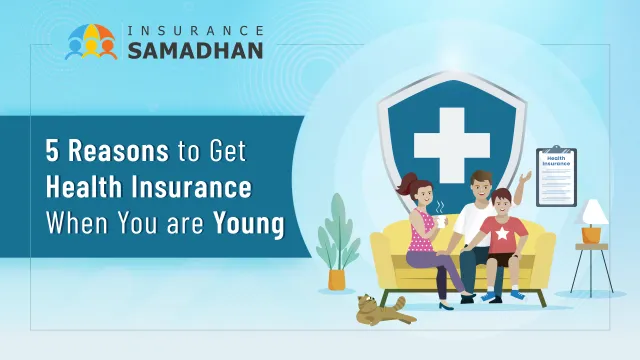When you’re young, healthy, and juggling rent, student loans, or maybe your first car payment, it’s easy to look at health insurance as just another expense you could avoid. As a professional insurance planner who’s been in this industry for well over a decade, I often hear young clients say, “I’m healthy, I don’t go to the doctor—why should I pay hundreds of dollars a month for something I rarely use?” It’s a fair question. But it also misses the larger picture of what health insurance really is—and what it’s meant to do.
Understanding the Real Purpose of Health Insurance
At its core, health insurance isn’t just about covering the cost of annual checkups or a prescription here and there. It’s about protecting you from the unpredictable. Life is uncertain—accidents happen, illnesses come without warning, and medical costs in the United States are among the highest in the world.
A simple broken arm from a fall could set you back several thousand dollars. A hospital stay from an unexpected appendicitis? That can cost upwards of $15,000 to $30,000 without insurance. And those are relatively “routine” emergencies. If something more serious occurs—like a cancer diagnosis or a car accident with major injuries—the costs can escalate into hundreds of thousands of dollars very quickly.
In those moments, health insurance doesn’t feel like a monthly expense anymore—it becomes a financial lifeline.
The Myth of Invincibility
Young adults often operate with what I call the “invincibility mindset.” You feel strong, you don’t get sick often, and you recover quickly when you do. That’s not untrue—statistically, young adults do tend to have fewer chronic health issues. But being young doesn’t make you immune to emergencies. In fact, the Centers for Disease Control and Prevention (CDC) notes that emergency room visits are quite common among adults aged 20 to 29, especially due to sports injuries, car accidents, and other lifestyle-related incidents.
It only takes one such event to upend your finances. I’ve worked with clients in their twenties who were stuck with $50,000+ in medical debt simply because they opted out of insurance while in between jobs. The burden didn’t just affect their credit score—it changed their life trajectory. Debt delays home ownership, restricts career flexibility, and can impact mental health in significant ways.
Preventive Care and Long-Term Health
Health insurance isn’t just for emergencies. One of the less discussed but incredibly important benefits is access to preventive care—annual physicals, screenings, vaccinations, and mental health services. These might not feel urgent now, but they build the foundation for long-term health.
Most Affordable Care Act (ACA) compliant plans offer these preventive services at no additional cost. Catching a problem early often leads to better outcomes and lower costs. For example, routine bloodwork might detect signs of a thyroid disorder or prediabetes—conditions that are manageable when caught early, but much more expensive and life-altering if left untreated.
Cost and Affordability: Are There Budget-Friendly Options?
Cost is usually the biggest barrier for young adults. If your employer doesn’t provide coverage, buying a plan on your own can feel expensive. But under the ACA, many young adults qualify for subsidies through the health insurance marketplace. In fact, if you’re making less than around $30,000 a year (as of 2025 figures), you likely qualify for premium assistance that can lower your monthly payments dramatically—sometimes to under $50 a month.
There’s also the “catastrophic” coverage option for those under 30. These plans have low premiums and high deductibles, but they protect against worst-case scenarios like hospitalization or major surgery. It’s not comprehensive, but it offers peace of mind for a relatively low monthly fee.
Some young adults also stay on their parents’ plans until age 26, which is a great way to maintain coverage affordably if that option is available.
Mental Health: A Growing Need
Another overlooked aspect is mental health coverage. Depression, anxiety, and stress-related disorders are rising among young adults, particularly in the post-pandemic world. Health insurance plans now cover therapy, counseling, and medication—often with minimal out-of-pocket costs. Without insurance, therapy sessions can cost $100 to $250 each, putting consistent care out of reach for many.
Is It Ever Okay to Go Without Insurance?
I’ll be honest—there are narrow scenarios where skipping insurance might make financial sense temporarily, especially if you’re just between jobs and expect to be covered soon or if you have access to direct primary care and emergency savings. But this is risky. Even a single uninsured month can lead to massive exposure. In those cases, I’d recommend at least looking into short-term health plans or catastrophic coverage to limit your financial vulnerability.
Final Thoughts: It’s About Risk Management, Not Daily Use
Health insurance for young adults isn’t about whether you think you’ll need it this month or next. It’s about the financial protection it offers if—and when—life throws a curveball. You don’t buy car insurance because you expect to crash, and you don’t avoid fire insurance just because your house hasn’t burned down.
The same logic applies to health insurance. When you’re young, the cost of coverage is generally lower. That’s when you should be buying it—before you need it.
From where I stand as a professional insurance planner, I’d say this: If you can insure your phone, your pet, or your car, you should definitely insure yourself. Your health is the most valuable asset you own.
If you’re unsure where to start, speak with a licensed insurance advisor or check out healthcare.gov to see your options and subsidies. Don’t wait until you’re sitting in an ER wondering how you’ll pay for it all. Plan ahead—you’ll thank yourself later.
